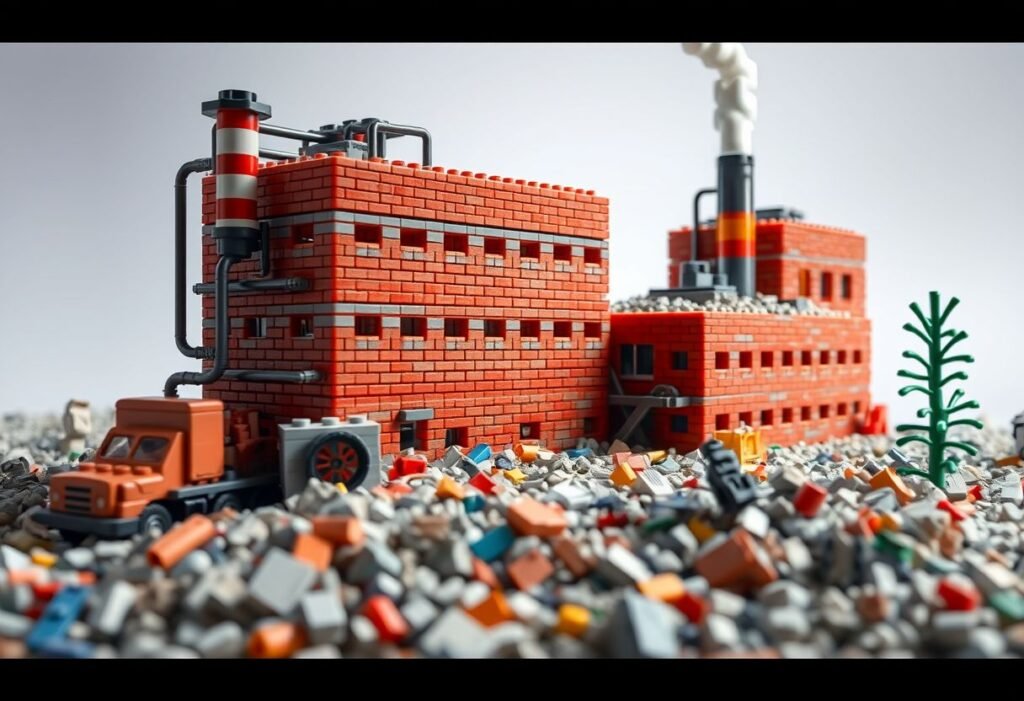This innovative mobile factory harnesses the potential of rubble left in the wake of destruction, particularly after conflicts, and transforms it into viable building materials. This process not only addresses the urgent need for housing and infrastructure in war-torn areas but also contributes to sustainable construction practices. By producing strong, mortarless bricks that can be easily assembled, this solution holds the key to rapid rebuilding efforts.
The Innovative Mobile Production Unit
At the forefront of modern construction technology, the mobile brick factory operates with remarkable efficiency. It utilizes advanced machinery to crush rubble and convert it into high-quality bricks that meet industry standards. Capable of operating in various conditions, the factory’s design allows it to be transported to disaster-stricken zones, offering an immediate response where traditional building methods may fall short. This capability not only accelerates recovery efforts but also highlights the integration of innovation in rebuilding communities.
Transforming Rubble into Building Materials
The process of turning rubble into bricks involves several steps that ensure the final product is durable and suitable for construction. Initially, debris is collected and sorted, with harmful materials removed to maintain safety and quality standards. After this sorting, the rubble is crushed and processed, eventually leading to the creation of interlocking bricks that can be assembled without the need for mortar. This mortarless construction technique simplifies the building process and reduces the time and resources necessary for assembly, making it ideal for urgent construction needs.
Impacts on Recovery in Conflict Zones
In regions affected by conflict, rebuilding is often a monumental challenge. The mobile factory not only creates employment opportunities for local populations but also facilitates the restoration of essential infrastructure. With its ability to produce bricks on-site, resources are maximized and transportation costs minimized, addressing both economic and logistical issues faced during recovery. Furthermore, the use of sustainable materials underscores a commitment to rebuilding responsibly, paving the way for future developments that prioritize environmental impacts.
The Role of Technology in Modern Construction
Modern construction increasingly relies on innovative technology to improve efficiency and sustainability. This mobile brick factory is a prime example of how technology can address critical issues in building practices, especially in the aftermath of disasters. By incorporating automation and high-quality production methods, the mobile factory exemplifies the potential of technological advancements in revolutionizing traditional approaches to construction. Such initiatives encourage a shift towards more adaptable and resilient building strategies that can respond effectively to both natural and man-made disasters.
Supporting Infrastructure Development
The introduction of this mobile factory promises significant advantages for infrastructure development in devastated areas. As the factory sets up to provide essential materials, it could aid in rebuilding homes, schools, and hospitals, critical facilities needed for a stable community. The bricks produced enable fast-paced construction processes which are fundamental in emergencies, ensuring that support systems are in place as communities recover. This initiative not only focuses on immediate needs but also aims for a strategic approach in planning future urban developments.
A Sustainable Future for Construction
Beyond just immediate relief, the mobile brick factory champions sustainability in the construction sector. By reusing materials that would otherwise contribute to environmental degradation, this innovation encourages a circular economy where waste is minimized and resources are effectively utilized. The bricks serve as a model for future construction practices aiming to integrate eco-friendly solutions. As cities around the world face rising challenges from climate change and urbanization, technologies like this present a template for sustainable urban development in the future.
Disclaimer: The content provided here is for informational purposes only and does not constitute professional advice. All claims and statements are based on current knowledge and should be verified independently.





















